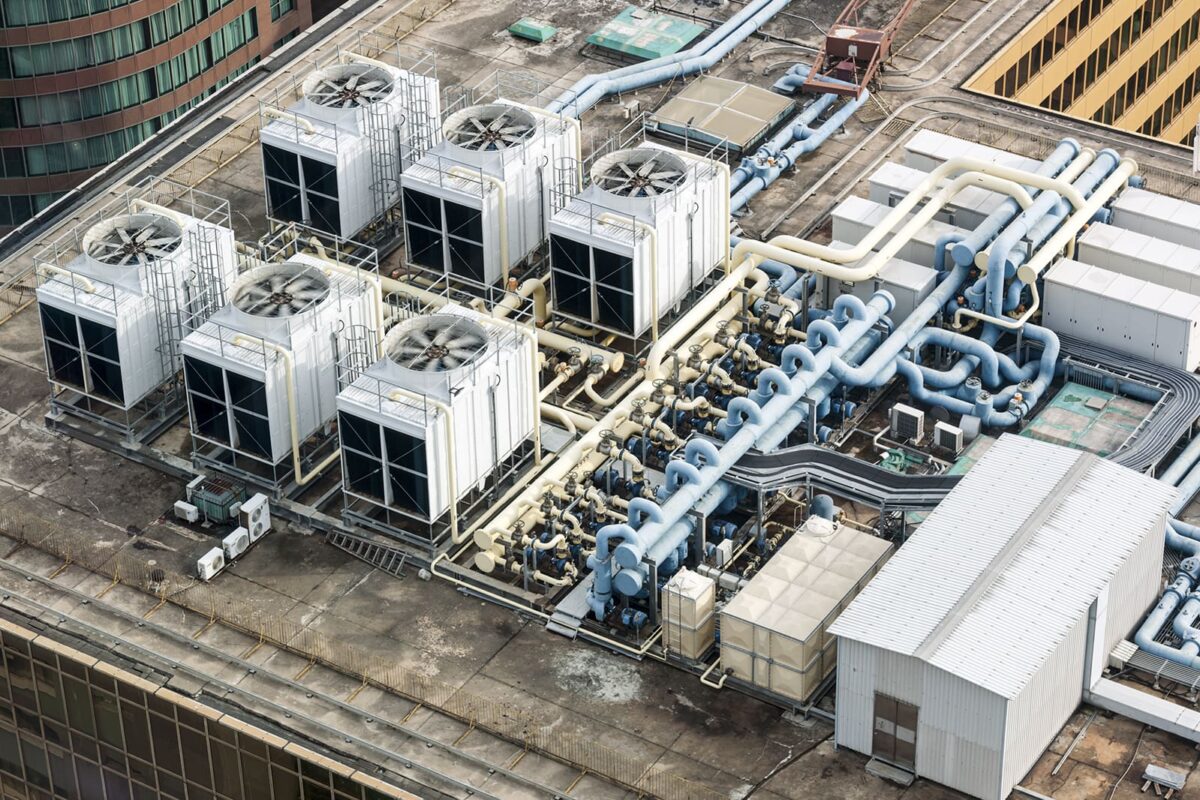For anyone managing a building, change is inevitable. Building usage might change, such as office spaces repurposed for educational purposes. Tenants can change, bringing with them new requirements. Or the manufacturing process within a factory can change. All three examples mean rethinking the HVAC system that is currently in place, especially for a solution that’s either oversized or not up to its new requirements.
Change leads to some big questions: do you replace equipment to renew the system, or can you recycle and repurpose in a responsible way, improving and adapting to the changed expectations on the system? If your plant still has plenty of life left, can it be incorporated into a new solution? And what if it runs on fossil fuel but is only part way through its economic life. Should it be retained or reused?
It is nice to think that recycling and repurposing are always viable options, but this needs to be looked at in detail and carefully evaluated. Older systems may struggle to provide sufficient heating and cooling capacity to meet tenant expectations around comfort and wellbeing, especially in light of COVID-19. System layouts may not suit the layout a new tenant need. And climate change can put increasing demand on the installed plant and services, putting pressure on their effectiveness.
You also need to take the long view. Any time you’re considering whether to replace or retain existing plant, or select something new, the long-term energy consumption, emissions and carbon footprint also need to be taken into account.
How then, when change is inevitable, do you make an informed decision about recycling, refurbishing, or replacing?
Modelling potential scenarios can help you determine the best operational and environmental outcomes from your options. You can design in flexibility, even when designing to meet a specific use. For example, a redesigned system for Queenstown airport replaced its large format packaged air conditioning units with a higher number of small fan coil units. This design makes it easier to accommodate future layout changes.
Designing with the future in mind can also mean ensuring any new plant is compatible with the future replacements for old plant. For example, a lot of older heating equipment requires water at 80oC to function correctly. New equipment, with high efficiency heat pumps, operates with 45oC water. Any redesign, even with repurposed equipment, should work to accommodate this.
Innovation is often seen as something that mandates new technology. But an innovative HVAC solution for an existing building can just as often incorporate recycled or repurposed equipment. That is the kind of thinking we always strive for at Jacksons. Our senior engineers have extensive experience and a long history of working across all kinds and ages of buildings. This informs their design work and encourages long term solutions, not quick fixes. We are energy specialists as well as HVAC engineers, and collaborate directly with property owners and tenants to deliver intelligent, cost effective and energy efficient solutions to their renewal needs.
